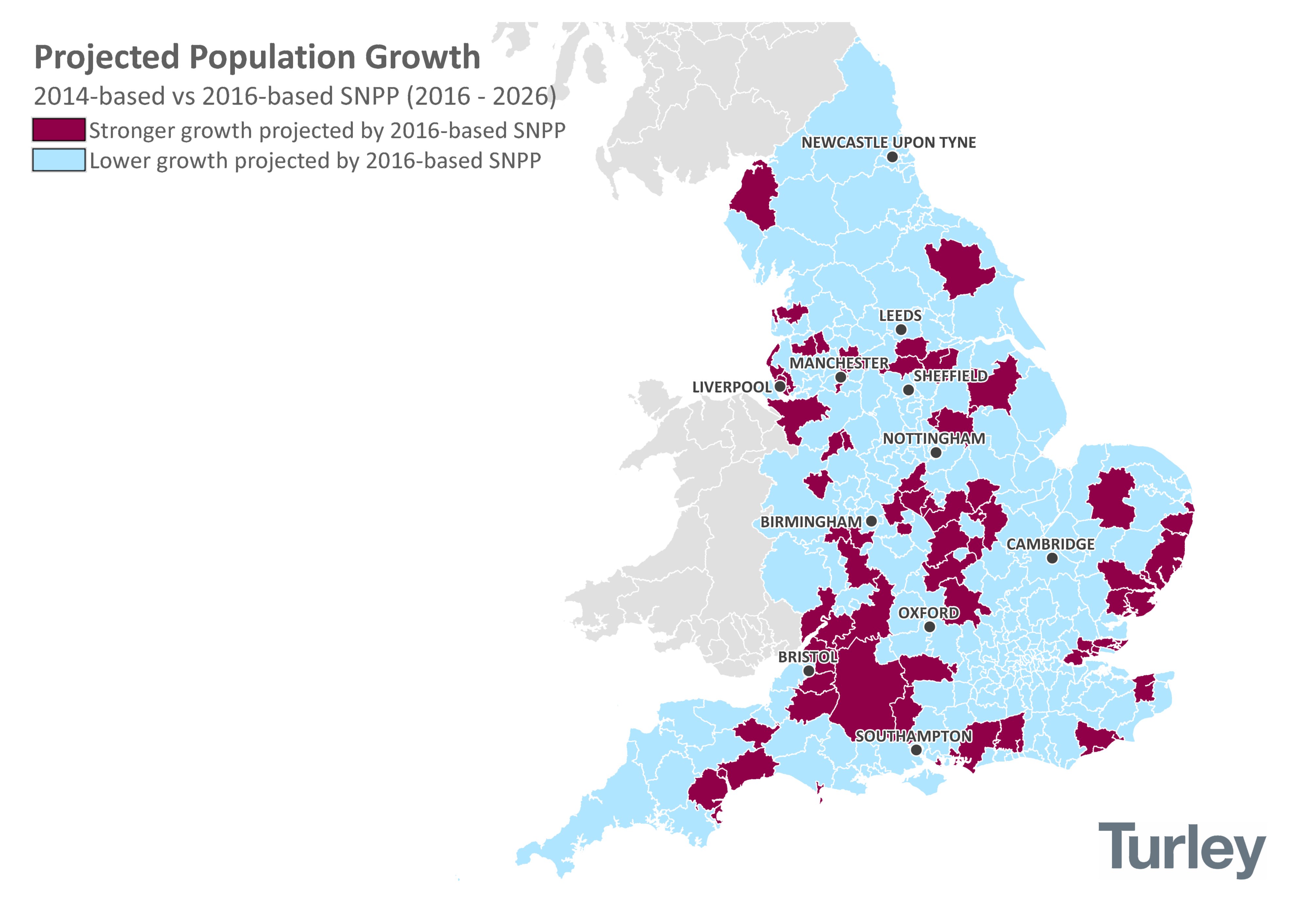Next Comment
14 September 2017
{content.field_page_title}}The only way is up
The Government’s proposals for a standardised calculation of housing needs
Read moreWhat are you looking for?
The household projections are set to take on an even greater significance following the introduction of the Government’s proposed simplification of the method for calculating housing needs.
The release of the 2016-based SNPP provides an early indication of the direction of travel in the forthcoming household projections, and consequently the future levels of housing need that authorities may be required to plan for.
Reliance on household projections means that the proposed standard method will be exposed to the swings which are a consistent feature of trend-based projections. This will present an ever greater challenge for Local Plans which look to set long-term strategies for future housing provision. There also exists an inherent risk that authorities interpret the projection as a reason to plan for fewer homes, which clearly contrasts with the view held by Government and others that more homes must be built to reconcile the long-term failure to provide enough housing.
The release of the 2016-based household projections this September will represent a key milestone, falling within a six month period of transition ahead of the anticipated implementation of the proposed standard method from January 2019. The industry has debated the merits of the new approach at length. The impact of the official projections may result in a fall in calculated need across much of the country, which – when set in the context of an acknowledged housing crisis – will further fuel this debate.
A comparison of the projected change in population under the 2016-based SNPP when compared to the 2014-based dataset which they replace illustrates the volatility described above, and is shown in the following map.

This reveals:
For a discussion on how the release of the 2016-based SNPP and the proposed introduction of a new standard method for calculating housing needs may affect you, please contact Antony Pollard or Andrew Lowe.
24 May 2018
14 September 2017
{content.field_page_title}}The Government’s proposals for a standardised calculation of housing needs
Read more